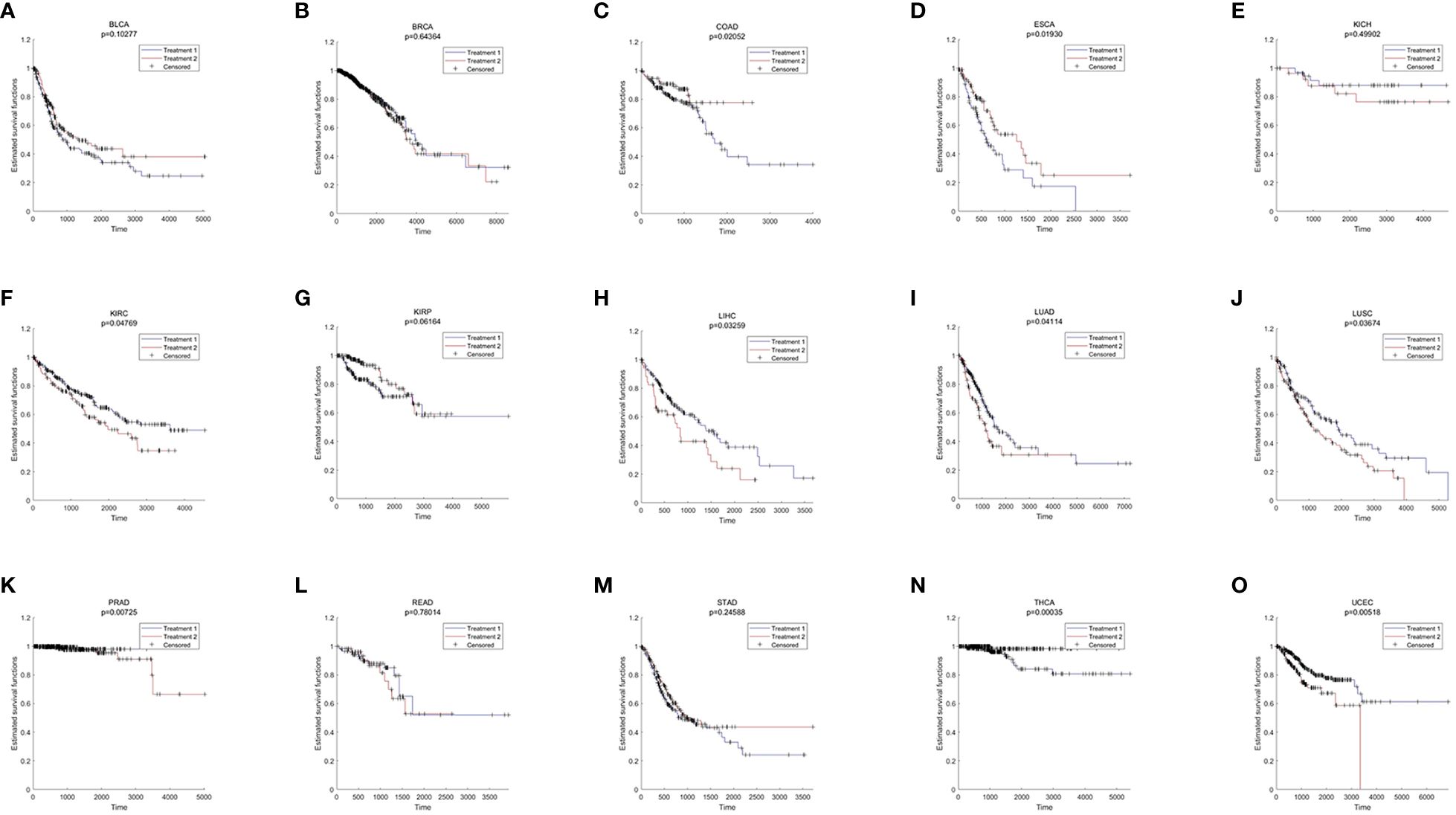
95% of researchers rate our articles as excellent or good
Learn more about the work of our research integrity team to safeguard the quality of each article we publish.
Find out more
CORRECTION article
Front. Endocrinol. , 03 April 2024
Sec. Systems Endocrinology
Volume 15 - 2024 | https://doi.org/10.3389/fendo.2024.1363078
This article is a correction to:
The oxidative aging model integrated various risk factors in type 2 diabetes mellitus at system level
A Corrigendum on
The oxidative aging model integrated various risk factors in type 2 diabetes mellitus at system level
By Chen Y, Yao L, Zhao S, Xu M, Ren S, Xie L, Liu L and Wang Y (2023). Front. Endocrinol. 14:1196293. doi: 10.3389/fendo.2023.1196293
In the published article, there was an error in Figure 4 as published. The censored samples were missed in the previous version, herein they have been added. The corrected Figure 4 and its caption appear below.

Figure 4 The results of survival analysis across different cancer types (A) BLCA; (B) BRCA; (C) COAD; (D) ESCA; (E) KICH; (F) KIRC; (G) KIRP; (H) LIHC; (I) LUAD; (J) LUSC; (K) PRAD; (L) READ; (M) STAD; (N) THCA; (O) LIHC.
In the published article, there was an error, which was related to Figure 4.
A correction has been made to “Result 2.6”, Pan-cancer Analysis Further Verified the Mechanism of Oxidative aging in T2DM, Paragraph 1. This sentence previously stated:
“There were 9 out of 15 cancer types with significant results (including BLCA, COAD, KIRC, KIRP, LUSC, PRAD, READ, THCA and UCEC, shown in Figure 4).”
The corrected sentence appears below:
“There were 9 out of 15 cancer types with significant results (including COAD, ESCA, KIRC, LIHC, LUAD, LUSC, PRAD, THCA and UCEC, shown in Figure 4).”
The authors apologize for this error and state that this does not change the scientific conclusions of the article in any way. The original article has been updated.
All claims expressed in this article are solely those of the authors and do not necessarily represent those of their affiliated organizations, or those of the publisher, the editors and the reviewers. Any product that may be evaluated in this article, or claim that may be made by its manufacturer, is not guaranteed or endorsed by the publisher.
Keywords: oxidative stress, type 2 diabetes mellitus, energy metabolism, aging, pan-cancer analysis
Citation: Chen Y, Yao L, Zhao S, Xu M, Ren S, Xie L, Liu L and Wang Y (2024) Corrigendum: The oxidative aging model integrated various risk factors in type 2 diabetes mellitus at system level. Front. Endocrinol. 15:1363078. doi: 10.3389/fendo.2024.1363078
Received: 29 December 2023; Accepted: 23 February 2024;
Published: 03 April 2024.
Approved by:
Frontiers Editorial Office, Frontiers Media SA, SwitzerlandCopyright © 2024 Chen, Yao, Zhao, Xu, Ren, Xie, Liu and Wang. This is an open-access article distributed under the terms of the Creative Commons Attribution License (CC BY). The use, distribution or reproduction in other forums is permitted, provided the original author(s) and the copyright owner(s) are credited and that the original publication in this journal is cited, in accordance with accepted academic practice. No use, distribution or reproduction is permitted which does not comply with these terms.
*Correspondence: Lu Xie, eGllbHVAc2licHQuY29t; Lei Liu, bGl1bGVpQGZ1ZGFuLmVkdS5jbg==; Yin Wang, Y2hpbmF3YW5neWluQGZveG1haWwuY29t
Disclaimer: All claims expressed in this article are solely those of the authors and do not necessarily represent those of their affiliated organizations, or those of the publisher, the editors and the reviewers. Any product that may be evaluated in this article or claim that may be made by its manufacturer is not guaranteed or endorsed by the publisher.
Research integrity at Frontiers

Learn more about the work of our research integrity team to safeguard the quality of each article we publish.